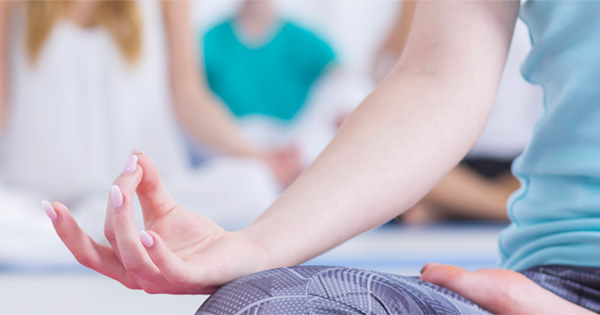Understanding the Basics of Breathing and Respiration
Breathing involves the passage of air in and out of the lungs, and respiration involves the process of gas exchange between the lungs and the blood.1 During inspiration, the diaphragm contracts, the abdomen moves down, while the ribs expand and oxygen moves into the lungs.1 On expiration, the diaphragm relaxes, the abdomen rises, the ribs move inward and carbon dioxide moves out of the body.1
For the most part, the control of the breath is involuntary or autonomic. The respiratory center in the brain stem is responsible for controlling the breath/respiratory rate and receptors in the aorta detect changes in the blood to regulate the respiratory rate.1 For example, during exercise, levels of carbon dioxide increase, and the receptors in the aorta stimulate the respiratory center to increase the respiratory rate, resulting in a decrease of carbon dioxide and an increase oxygenation. However, if breathing is shallow and fast, as it is commonly seen during periods of stress, then hyperventilation occurs, resulting in dizziness and anxiety.1
On the other hand, there are aspects of breathing that are under voluntary control via the cortex of the brain; such as, speaking and singing.1
Biomechanics of Respiration
The term “tidal breathing” defines normal respiration with a relatively constant rate and inspiratory/expiratory volumes (tidal volume). Tidal breathing is driven by a group of primary and accessory inspiratory muscles.2 The major respiratory muscle is the diaphragm, which during normal inspiration, contracts and flattens, while simultaneously pushing the abdomen down and pushing the lower ribs up and out.2 Coordinated contraction of the diaphragm, external intercostals, parasternal, sternomastoid and scalene muscles results in the expansion of the ribcage and rising of the chest.2 This process generates a transdiaphragmatic pressure gradient (increased abdominal pressure and decreased thoracic pressure) resulting in a decrease in intrathoracic/intrapleural pressure and subsequent ventilation of the lungs upon which pulmonary gas exchange occurs via the alveoli across the transpulmonary pressure gradient.2 For the most part, expiration is passive, with the diaphragm returning to its resting dome configuration, which causes the lungs to deflate and expel air into the atmosphere. However, when breathing effort is increased, the expiratory muscles become active; including the abdominal muscles which pull in the abdominal wall when contracted, while forcing the diaphragm to rise superiorly into the ribcage and deflating the lungs.2
Studies performed on diaphragmic movement and function claim that optimal respiration requires the active control of the diaphragmic muscle, so that during inspiration, the lower ribs stay low and only expand laterally, while the abdomen expands instead of the chest.2 Analysis of diaphragm movement during tidal breathing and breath holding using magnetic resonance imaging (MRI) and spirometry has reported a correlation between the degree of movement of the diaphragm and changes in lung volume: the greater the difference in diaphragm movement between the inspiration and expiration cycles, the greater the tidal volume.2 Diaphragmatic breathing has also been shown to facilitate slow respiratory movements. This was supported by a study in which healthy subjects trained in diaphragmatic breathing demonstrated slower respiratory rates and were more likely to achieve the study goal of 3–7 breaths per min than subjects who breathed normally at a natural pace.2 Another study of the diaphragm using Magnetic Resonance Imaging (MRI) found that slow breathing was associated with a greater diaphragm excursion in healthy humans, as compared to patients with a chronic spinal pathology; which concluded that correct and balanced diaphragm performance aids to maintain abdominal pressure and smooth out respiration.2
It is evident that the correct movement and function of the diaphragmatic muscles is of paramount importance. Improved posture and respiratory function improve the breathing quality by creating anatomical space for air to flow properly, resulting in a deepening of the breath with every diaphragmatic exchange. A simple exercise can be done to improve posture by erecting the spine while in a sitting position and simultaneously tap on the top of the sternum, imagining that you have a white string lifting you from the crown of the head and the top of the sternum.
References
1 Kaplanclinic.com
2 The physiological effects of slow breathing in the healthy human
Marc A. Russo,1 Danielle M. Santarelli,1 and Dean O’Rourke1,2
Author: Jackeline Vajta, M.D.
